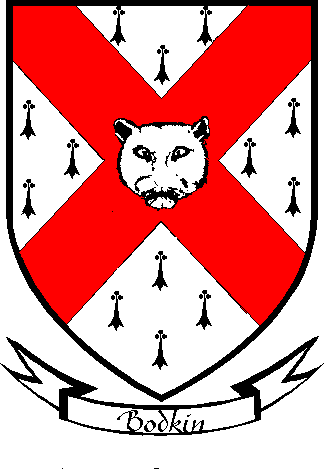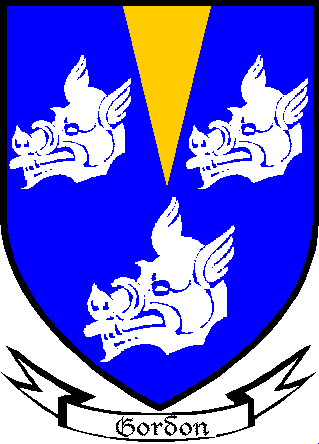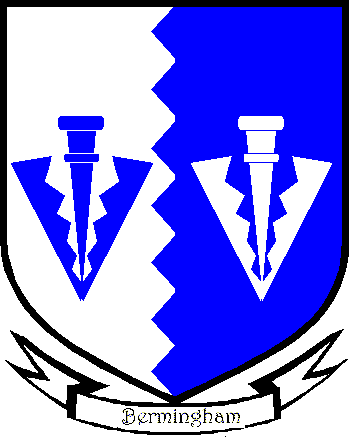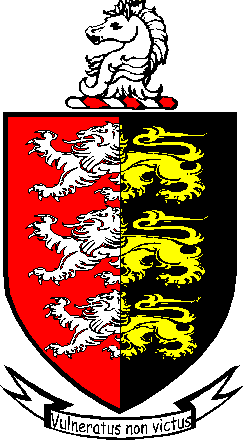
1820's to 1887
History
 |
The
Bodkin Family 1820's to 1887 |
In 1831 John James (J.J.) Bodkin was elected M.P. for the Galway City. For reasons unknown at this point, he contested the next election, in 1835, as M.P. for Galway County. At this time he was already resident at Quarrymount. The Tithe Records for 1824 show that John Bodkin paid £5-16-8 in tithes on a 100 acre property. A list of subscribers to Lewis' Topographical Dictionary shows that John Bodkin was resident at Quarrymount in 1836. The same publication lists Major Thomas Bodkin, his father, as owner of Kilclooney. A map of 1819 clearly shows that Kilclooney was located about a half mile from Poulakuillar. The location of Poulakuillar coincides precisely with what is now known as Quarrymount.
Local folklore records that J.J. Bodkin built the present house at Quarrymount as a result of an insulting exchange in the House of Commons when an opponent advised him to "go home and stop the cattle eating the thatch" of his house. It seems more likely that the house was built in 1824 when he married Mary Bodkin of Louth Hall and that he was given a small portion of the Bodkin estate to build his own home. Whatever the case, he was to build one of the finest examples of compact Regency houses in the county. J.J. Bodkin served as M.P. for Co. Galway until 1847.
The fortunes of the Bodkins survived the next generation as his son Thomas J. married Helen O'Kelly of Gallagh Castle near Tuam. The Quarrymount estate at this point extended to 2,312 acres, much of which was leased to tenant farmers. The sons of Thomas J. Bodkin, John, also known as Jacky or "Mad Jack", and Cornelius appeared to be a quarrelsome pair and the local constabulary were called to the house on one occasion when Jacky fired shots at his brother and then locked himself in one of the bedrooms. This incident was reputedly due to a bout of "ether drinking" on the part of Jacky. Ether, apparently, was the equivalent of Ecstasy or Cocaine in the 19th century. Their cousin, William, appears to have been of more moderate temperament as he became English provincial of the Society of Jesus and Rector of Stoneyhurst and Beaumont Colleges.
Jacky Bodkin, who inherited the house and lands on the death of his father in 1868, appears to have been fairly ostentatious and a spendthrift, having a reputation for high stakes gambling. An inscription found behind the wallpaper in the dining room indicates that the house received a makeover in 1879. This was probably the final toss of the dice for a generation which seemed intent on spending the family fortune, as the estate was sold in 1887 for £40,000. The purchaser was the Irish Land Purchase and Resettlement Company, a company established by Charles Stuart Parnell to purchase country estates and divide them among the tenant farmers. Parnell visited the house in 1884 and "walked" the property prior to concluding the purchase. As it happened, Quarrymount was the one and only estate purchased by this company, possibly due to the fact that Parnell had other difficulties and was in poor health in the following years.
In the immediate aftermath of the sale, which was concluded in 1887, Cornelius Bodkin attempted to re-purchase the house and surrounding demesne for £14,000. However, he didn't succeed in his efforts to keep the house in the family. Jacky Bodkin was reputed to have emigrated to France, and later the Fiji Islands, after the sale. However, he re-appeared in 1915 as a recruiting officer for the British Army. Cornelius Bodkin was said to have emigrated to Canada where he died in 1901.
1887 - 1902
During the 15 years from 1887 to 1902 the property was occupied by caretakers for the Irish Land Purchase and Resettlement Company. When this company was liquidated the property was purchased by the Congested Districts Board, a state organisation with a similar set of objectives, for £2,785. It is not clear, at this point, how much land was purchased by the Congested Districts Board as many of the former tenants had bought their holdings in the preceding 18 years.
After the turn of the century, the Land Commission was established to acquire large estates for division among smallholders. As part of this brief, Quarrymount became part of the Land Commission's portfolio.
 |
1902
- 1972. The Gordon Family. |
At the beginning of the 20th century the Land Commission allocated 220 acres of the Quarrymount estate, including the main house, to Mr. X Gordon. Mr. Gordon was originally from near Frenchpark in Co. Roscommon and, presumably, he qualified for the allocation because he farmed in what was regarded as a congested area. Less charitable opinion states that the Gordon family had relatives working for the Land Commission who ensured that they received one of the best farms to be allocated.
Three generations of Gordons lived at Quarrymount, farming and breeding bloodstock. Mr. Henry Gordon, the last of the family to live in the house, is still a well-known figure in equestrian circles in the west of Ireland. In 1925 the drawing room was re-decorated. This would suggest that, while some improvements were made, the lack of a very large estate limited the funds available for the upkeep of the house.
Over the following fifty years the number of large estates in the country became more fragmented, largely due to the efforts of the Land Commission. The focus then shifted to smaller estates. Fate dictated that the very organisation which provided the Gordon family with such a grand lifestyle would also take it away! In the late 1960's, all but 20 acres of the Quarrymount estate was acquired by the Land Commission. The surrounding woodland was systematically felled and the cleared lands were re-distributed to local farmers in order to increase the size of their holdings.
While it would be difficult to fully maintain a house of this size with the income from a large farm, it would have been totally impossible to do so without an external source of income on a farm of just 20 acres. At this time domestic and agricultural rates (property taxes) on the house and outbuildings would have amounted to approximately half the average industrial wage. Farm incomes were also quite poor as this was prior to Ireland's entry to the E.E.C. |
Quarrymount in the late 1960's |
The actions of the Land Commission, which made the majority of country houses unviable, did more to hasten the decline of such houses than the burning of many fine houses during the War of Independence. A significant number of classic houses, stripped of their extensive estates, were allowed to fall into ruin in the 1960's. Many were "dismantled" or "unroofed" to avoid the punitive rates which applied to all private houses at that time.
In 1972, Mr. Henry Gordon sold the remaining land and the house and moved to Kinvara where he still lives. The majority of the contents of the house were also sold by auction at this time.
 |
1972
- 1992 Frank & Mary Bermingham |
The next owner of Quarrymount, and the surrounding 20 acre field, was a Mr. Thomas Melia, a builder from Tuam. He apparently had plans to re-develop the property as a hotel, but these plans were never realised. It was sold again in 1977 to Mr. Frank Bermingham who farms the adjoining land. Mr. Bermingham's interest in the property was driven by the need for additional farmland and the house was not of particular interest. He considered refurbishing the house as a private residence but, family circumstances prevented this.
Large houses were out of favour in the property market of the early 1970's and very few people would have had the resources to refurbish a derelict house of 7,500 sq. ft. and then furnish and maintain it. The perception was, and still is, that it would cost a small fortune just to heat it!
Over the ensuing years, the rear portion of the house, approximately 2,100 sq. ft. in area, became so delapidated that it was demolished in order to make the site safe.
In 1982 the Tuscan portico on the facade of the house was purchased Mr. Tom Brennan and re-erected as the centerpiece of a reproduction Georgian house near Clonee in Co. Meath. This left the house looking very delapidated and sorrowful, as shown below left.
|
|
|||
Facade - February 1987 |
Portico in new setting |
While one must admire the authentic Georgian character of Mr. Brennan's new house, it is questionable whether the massive size of the portico actually suits the proportions of the house, as shown above right.
| In 1984 the two main fire
surrounds and mantels were removed as part of a sale
agreement. One of these is white marble and the other is
black marble, as shown on the right. The children in the picture, which was
taken just prior to the removal of the fireplaces, are Shane, Maura, and Paraic Bermingham. Fortunately, the sale was never completed and both fireplaces are now in safe storage. In one sense it is fortunate that they were removed as the remaining fireplaces have been the subject of two separate burglaries in 1992 and 1998. |
|
In 1990 the house, and the surrounding 20 acre field, was put on the market once more. After some negotiations, the house was sold to Michael & Teresa O'Grady. In order to reduce the purchase price, 17½ acres were excluded from the sale.
 |
1992
- Present. Michael & Teresa O'Grady. |
After protracted legal discussions the sale of the house was completed in early 1992. Since then, the roof has been replaced and new windows and doors have been manufactured. The SLOW progress of the restoration is detailed under The SLOW Recovery.